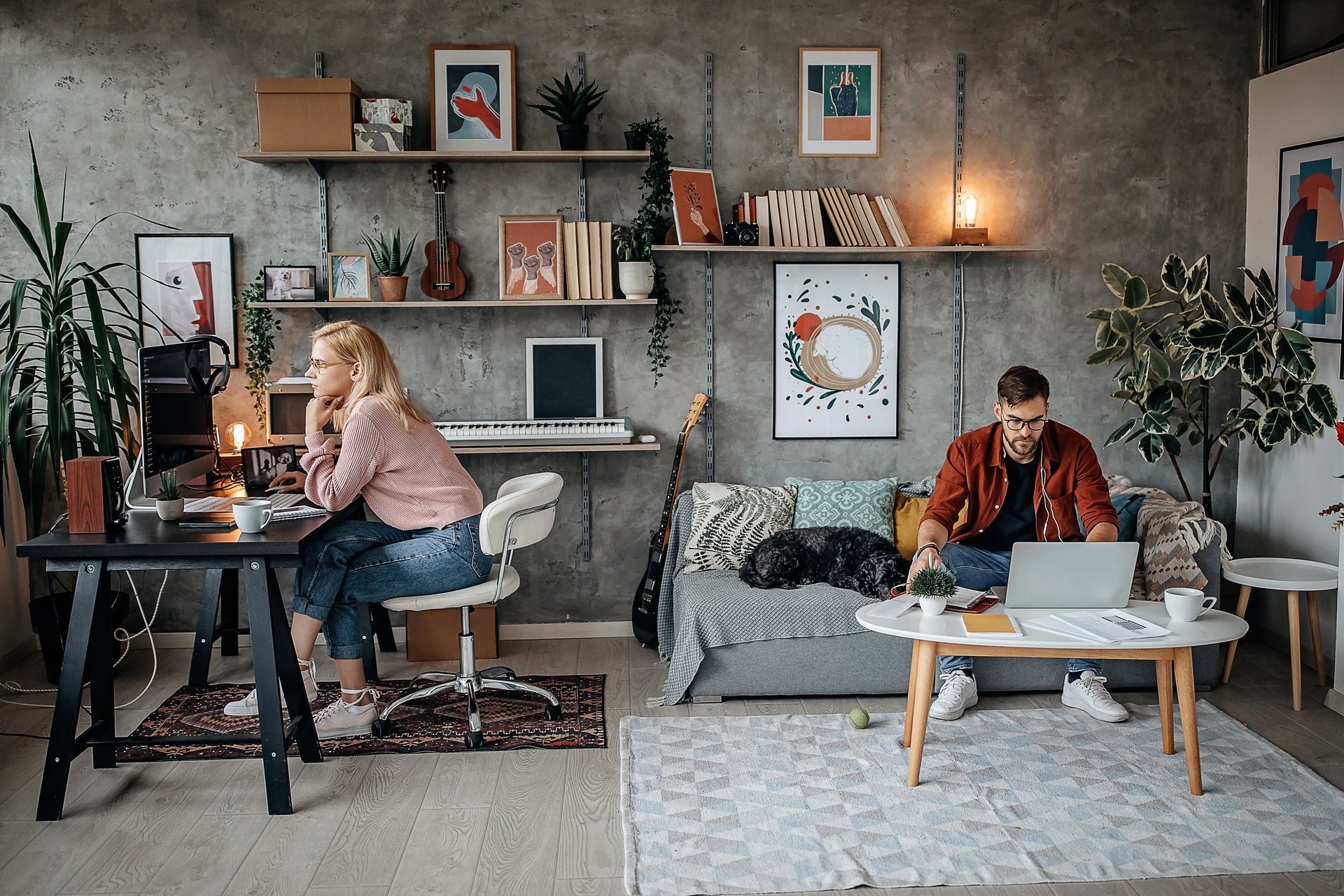1MG FlippingBooks
Hybrid: navigating the new norm
By Hazel Kang
Drawn by the appeal of greater flexibility, less time spent commuting, and having a work-life balance, an increasing number of companies are making the shift to hybrid spaces. On the flipside, often coming hand-in-hand with hybrid work is the question of meaningful collaboration and productivity. Hybrid problems call for hybrid perspectives.

The phrase “hybrid work” has become something of a buzzword – up there with “woke” and “metaverse” – but it means different things for different businesses.
X (formerly known as Twitter) was relatively early to the party, first exploring flexibility in work models pre-pandemic in late 2017. Then-CEO Twitter, Jack Dorsey, sent a company-wide
email claiming that he was going to work from home every Tuesday since he got more work done and felt more focused. Now, X allows employees to take
full control of their work style, whether it be working from home, coming into the office several days, or being at the office full-time.
For example, top music streaming platform, Spotify, developed a
“Work From Anywhere” model in 2021 that enables employees to work in three modes: Home Mix, Office Mix, or a co-working space.
For Australian software company Atlassian, hybrid work entails
only four days of required in-office work each year. Their new policy,
"Team Anywhere", allows employees to work in any country in which the company has an office.
54% of employees now say they would look for another job if their employer did not offer remote-work options. However, a common concern for the many companies offering hybrid work is the question of worker productivity and meaningful collaboration (or lack thereof).
Meanwhile, despite the flexibility and freedom offered by hybrid work, some office workers still prioritise the benefit of serendipitous encounters between colleagues – the moments that spark insightful conversations, creativity and innovation.
University of Queensland Business School lecturer Dr Gemma Irving has some great insights on cultivating creativity and productivity in hybrid spaces.
“Sometimes it’s framed as an either-or, that we can only be creative when we’re in the office together, but we have to remember that offices aren’t that great,” Dr Irving says.
“There’s a bit of nostalgia about how wonderful it was when we were all back in the office, but really, a lot of people were in quite uninspiring, open plan settings where they felt distracted and under the pump. That’s really not ideal for creativity,” she says.
So how can we cultivate creativity? For hybrid workers, it’s very much a question of individual choice as to what inspires – whether that be going out and working on the back deck or heading to a local library.
What about those all-important conversations started around the water cooler? If you ask Dr Irving, they’re not all they’re cracked up to be – there are plenty of other ways to experience those serendipitous connections.
“In reality, those water cooler conversations don’t often happen, because people put on their headphones and go out of their way not to engage with others,” she says.
“Online, serendipity isn’t always about interacting with the person. It’s incidentally finding really interesting people or ideas through social media, that then spark something else. It can be coming across a bit of information that strikes you.”
Beyond the social sphere, hybrid work is also a great productivity booster. According to research by PricewaterhouseCoopers in 2021, 57% of employees said their organisation beat workforce performance and productivity targets in the last 12 months.
Management in its traditional form – watching over employee’s shoulders in the office – is now no longer practical or feasible with hybrid work.
“The new model is that everything you do online is tracked. Microsoft produces a report at the end of the week based on how many hours you spent with your email app open and typing and all those kinds of things,” Dr Irving says.
This form of micromanaging can cause employees to be less engaged, motivated, and productive. Dr Irving questions this new model in the context of hybrid working on the understanding that productivity is often more to do with deep thinking than with time spent doing tasks.
“I think data is helpful, but data shouldn’t be God in terms of productivity and hybrid work,” she says.
At the end of the day, hybrid work is only effective when individuals know what works for them best.
“It goes back to the basic stuff of knowing yourself, knowing what works for you, and knowing whether you need to be in the office or at home to be productive.”
Here’s to a new era of tailor-made working arrangements.










